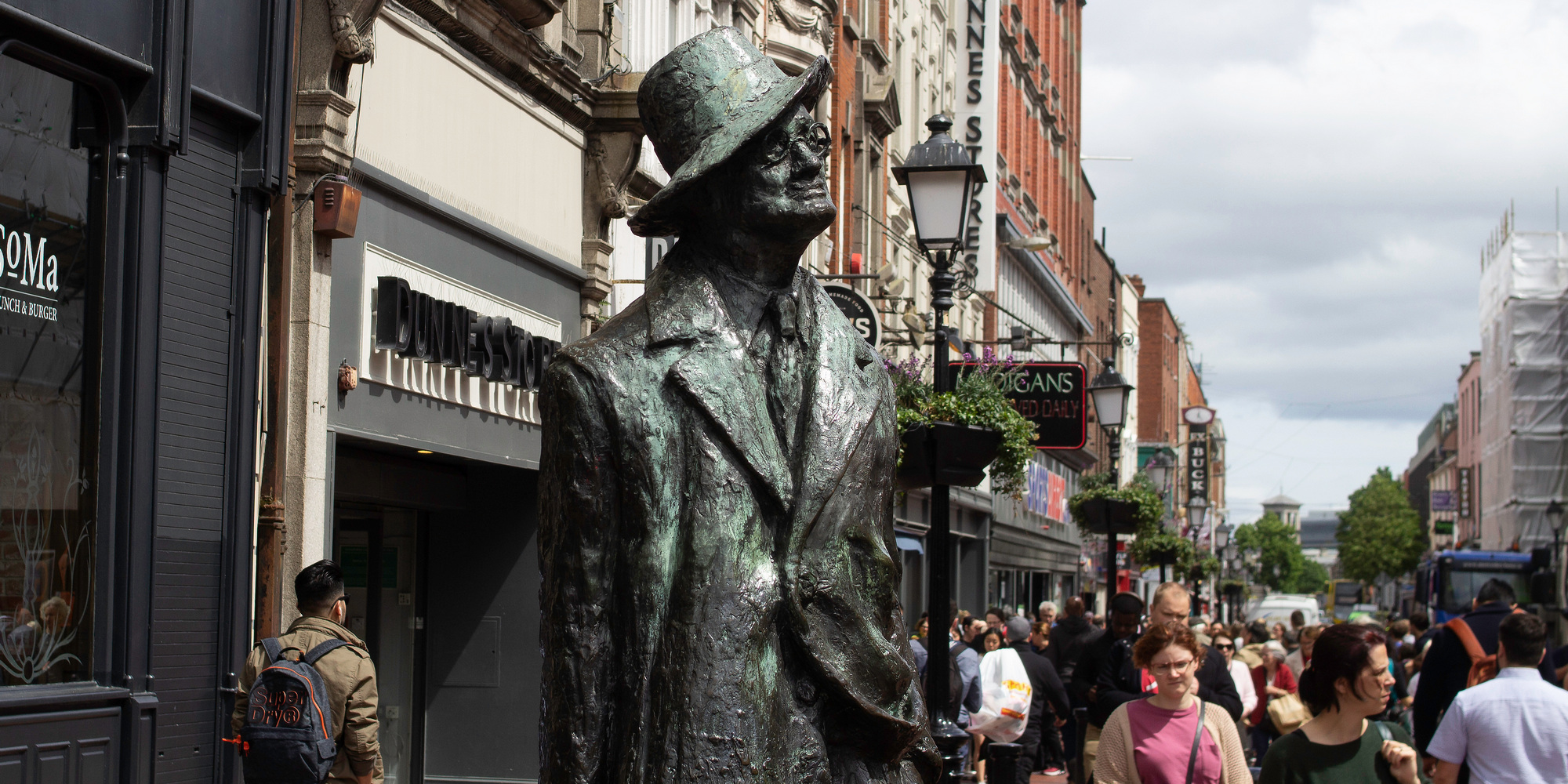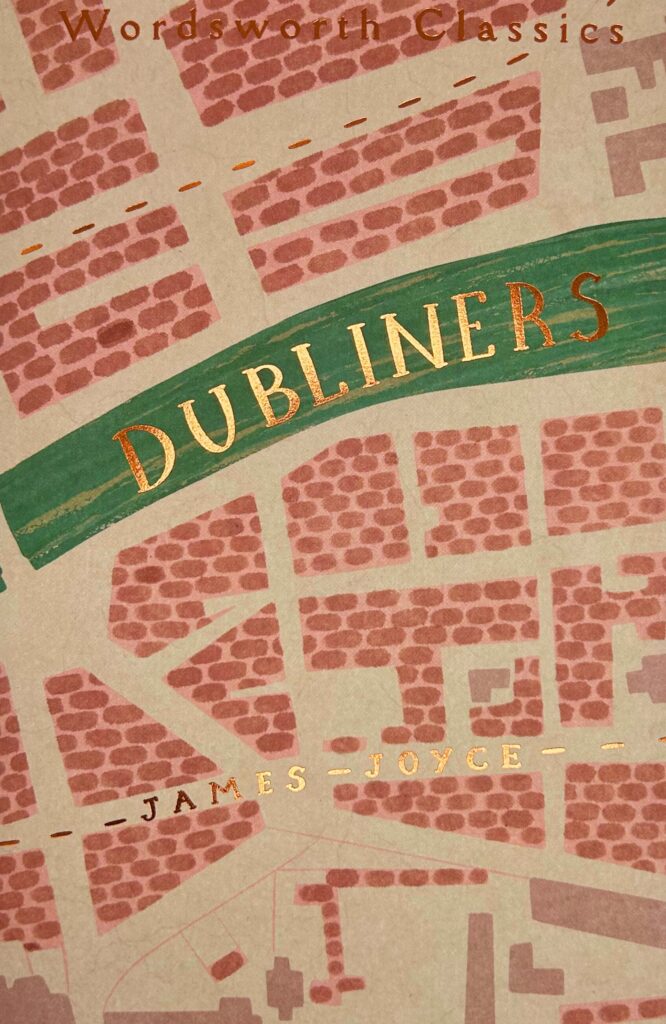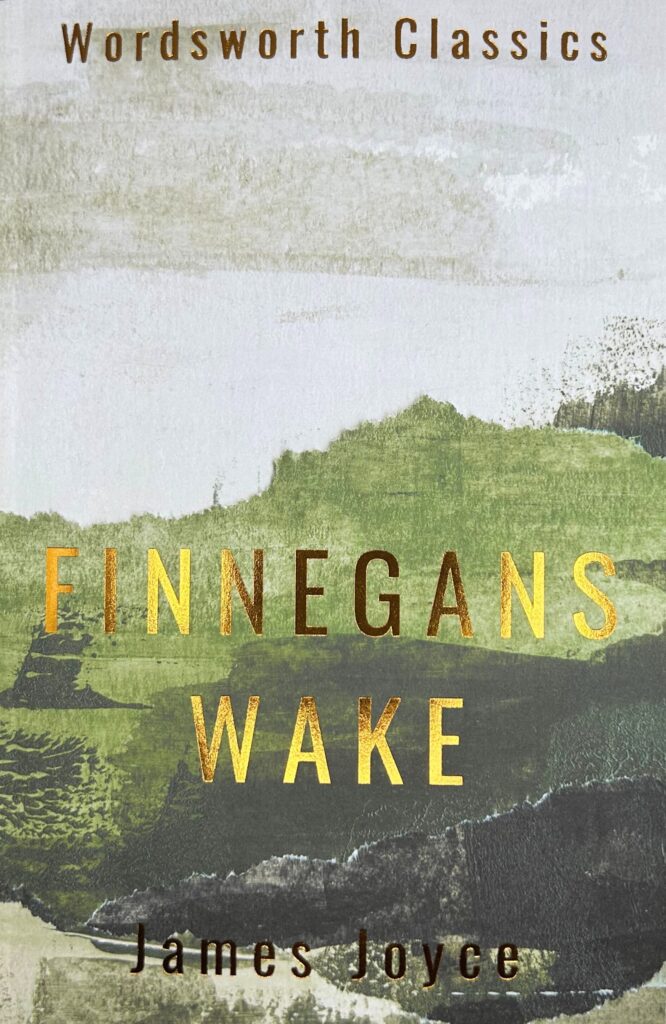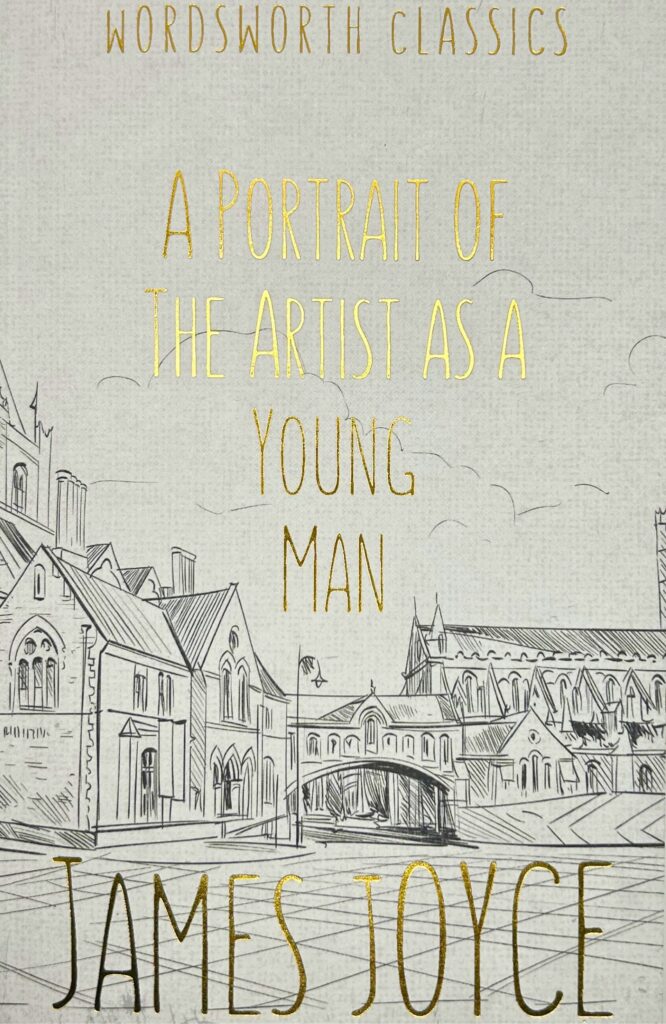
Bloomsday
On Bloomsday, Sally Minogue looks at the life of Dublin and beyond through Dubliners’ eyes.
There’s something of the embarrassment of those historical re-enactors about Bloomsday – the fetishistic celebrations of a fictional day in the life of a fictional character in a fictional Dublin. Pub crawls, dressing up, marathon readings, rashers and kidneys, Joyce lookalikes, Stephen Daedalus lookalikes, anyone-in-1904-Ireland lookalikes. And this goes far beyond Dublin. There’s a celebration of Bloomsday in the Hungarian birthplace, fictionally speaking, of Leopold Bloom’s father. (Just for Joyce devotees – can you name him? Even better, can you name the birthplace? Answers at the end.) And don’t even look at America. There’s a Bloomsday run in Spokane, Washington, for goodness’ sake, and yes, Joyce’s novel is its inspiration – but it’s held on the first Sunday in May! Indeed I can tell you the name of this year’s winner. OK; I’ve been doing a bit of Wikipedia trawling. But only to confirm what I somehow already knew.
What we literary types find uncomfortable about all this is its literalism, apparently at odds with Joyce’s sophisticated and experimental modernism. Heaven forfends that we should make the category mistake of confusing fiction with real life. But what is it about Joyce’s novel that makes people want to reproduce and re-present it? The depredations of the Irish Tourist Board aside, Bloomsday sprang first from a literary impulse. In the 1950s when perhaps Joyce was still not entirely in high regard, various Dublin literati, including Myles na Gopaleen/Flann O’Brien and the redoubtable poet Patrick Kavanagh, ritually revisited the scenes of the novel. Now you don’t get better literary credentials than those. Admittedly there was the lure of alcohol, but that was always to be had. What these writers were celebrating was the continuing imaginative power of both the novel and the day it represents.
Central to that enterprise is Dublin itself. It provides the framework of Ulysses, which is the same geographic framework for Bloomsday. Stephen’s Martello Tower is still there, as is Davy Byrne’s bar. For a modernist, Joyce is remarkably wedded to time and place, like his fellow modernist Virginia Woolf (as I recently discussed in looking at Mrs Dalloway, where Woolf offers a single day’s events in June, this time in London, with a female protagonist, as a sort of counterpart and counterpoint to Ulysses.) Ulysses is set in 1904, but not written and published till many years later. What Joyce was actually planning in 1904 was his masterly cycle of short stories, Dubliners. Here, as the title signals, Dublin really is the compass – geographical and moral – of a wider world. Unlike Ulysses, with its vast ambition (witness the title’s epic reference), Dubliners is a deliberately modest enterprise. In fact, by contrast to the mythological scale, the novel would attempt, Joyce says of his incipient short story collection that he is planning a series of ‘epiclets’ – baby epics, as it were. This oxymoron is characteristic of Joyce, yoking the grand to the ordinary. We have here already then the method of Ulysses writ small.
That celebration of the ordinary underlies all of Joyce’s work, including Finnegan’s Wake. His ‘ordinary’ may be mean, menial and venal, but the writer never condemns it. In showing it to be the proper, the right subject – perhaps the only subject – for fiction, he puts it in its rightful, central place. I would say that he elevates it in so doing, but that would be to suggest that it starts in a low position. Joyce’s point is that these distinctions don’t hold. In placing the ordinary at the centre, he is showing that it is at the centre. And if his means and subjects are apparently modest, his ambition remains large. Objecting to suggested cuts by the publisher of Dubliners, Joyce contended ‘I believe that in composing my chapter of moral history in exactly the way I have composed it I have taken the first step towards the spiritual liberation of my country.’
That note of the moral high ground, essential to Joyce’s pushing through his own vision as an artist, is however entirely absent from the writing. Dubliners trace all sorts of characters’ lives and most of them would not recognise themselves as being part of any moral history if indeed part of any history. From old Cotter in the first story, ‘The Sisters’, to Lily the caretaker’s daughter in its final one, ‘The Dead’, minor characters are given the due care of Joyce’s writerly attention as much as more central figures. Bit part players, they move in and out of the various narratives, their lives often unexplained. But always we believe them to exist beyond their brief appearances. They are part of the fabric of Dublin society.
Joyce said of the original fourteen stories written or rewritten in 1905 that he had sought to deliberately depict ‘childhood, adolescence, maturity and public life’. The writing of ‘The Dead’ separately in 1907 would provide the apotheosis of the cycle and its fifth theme – death. Yet we are never aware of being worked upon as we read. Rather the stories unfold before, or perhaps rather, around us. We occupy the childhood consciousness of the first-person narrator in the first three stories – ‘The Sisters’, ‘An Encounter’ and ‘Araby’ – without ever learning his name. ‘Araby’ brings him and us to the brink of growing up, all the poignant and unnameable longing he feels for Mangan’s sister poured into the visit to the bazaar to which he comes too late, its lights gradually going out and his coins useless in his pocket. Joyce’s peerless evocation of the shifting back and forth from boyish noisy play to desire which is not recognised as desire but can be expressed only through the murmured ‘O love! O love!’ renders this one of the key stories of the cycle. He never patronises his young narrator, nor makes his intense feelings foolish, rather lending them the inner light that he can muster even from ‘the dark odorous stables where a coachman smoothed and combed the horse or shook music from the buckled harness’. It is left to the boy, stranded in the darkening bazaar, to see himself ‘as a creature driven and derided by vanity: and my eyes burned with anguish and anger’. Though this final sentence of the story may feel like a judgement, it isn’t – we set it against all the power and inchoate beauty and purity of first love which the story has conjured.
A similar atmosphere permeates the following story, ‘Eveline’. Eveline could be the alter ego of Mangan’s sister, a young girl attempting to take a leap into a new life, but held back by a promise to her dead mother. This is the threshold to the central stories of adulthood and what Joyce calls ‘public life’, encompassing the bitter Irish politics of the time which can take place anywhere – on the street, at the dining table, over a drink or several. We see too the mean world of the office, the empty glamour of the concert room, the sometimes deadly interior of the rented room, but also the pleasure and warmth of a family hearth. And always the streets and features of Dublin: Stephen’s Green, Grafton Street, the Shelbourne hotel, Merrion Square, ‘the gaunt spectral mansions in which the old nobility of Dublin had roistered’, Temple Bar, boarding houses, eating houses, public houses, and in the final story the fine and hospitable house of the Misses Morkan.
Running through all is music and song, as embedded in Irish society as its Catholicism, reminding us of Joyce’s own musical accomplishments. If music, and especially song, usually represents something beyond the everyday, and a promise of other worlds, it can also carry grief and yearning and loss, as it does for Gretta in ‘The Dead’. Even when the apparent glow of happiness is evoked in these stories, at their heart there is always the sense of the desolation of the human spirit, often being held at bay by the most tenuous of human stratagems. The Miss Devlin who has become Mrs Kearney in ‘A Mother’ had, we are told, ‘sat amid the chilly circle of her accomplishments, waiting for some suitor to brave it and offer her a brilliant life. But the young men she met were ordinary and she gave them no encouragement, trying to console her romantic desires by eating a great deal of Turkish Delight in secret.’ Yes, Joyce has a piercing eye for his characters’ frailties. But he also has the utmost sympathy for even the luckless clerks who take refuge in drink, as well as for those who think they have achieved something in life, such as Gabriel, and then find a chasm opening before them. Joyce is after all a modernist, and though these stories were predominantly written when he was only twenty-three, his ambition already extended to giving the reader a glimpse of that chasm. It opens up fully before us at the end of ‘The Dead’, as Gabriel imagines the form of Gretta’s long-dead young lover: ‘Other forms were near. His soul had approached that region where dwell the vast hosts of the dead. … His own identity was fading out into a grey impalpable world: the solid world itself which these dead had one time reared and lived in was dissolving and dwindling.’ But there is a charity in this vision. Snow begins falling as Gabriel faces his own extinction, but snow that is ‘general all over Ireland’, uniting and unifying, ‘falling faintly through the universe and faintly falling, like the descent of their last end, upon all the living and the dead’. Though the cycle starts and ends with the dead, and though Joyce railed against the native Dublin he recreates, the very remorselessness of his vision as a writer brings with it something like grace.
Those questions: Bloom’s father was Rudolph Bloom, originally Rudolf Virag – fictionally speaking. His father’s birthplace is Szombathely – an actual place in Hungary where Bloomsday is still celebrated.
Books associated with this article

Dubliners
James Joyce

Finnegans Wake
James Joyce
